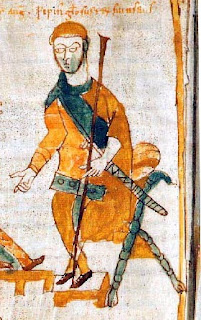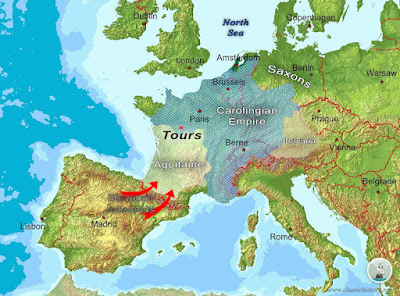Louis (1151 - 1190), a nephew of Barbarossa, liked to feud with his neighbors, the nobles of Thuringia in Germany (that's his seal in the illustration). One of them was Conrad of Wittelsbach, the Archbishop of Mainz (c.1120 - 1200).
Conrad was problematic, and very much attached to temporal power. Appointed Archbishop of Mainz by Frederick I, known as Barbarossa, he refused to recognize the antipope Paschal III, put up in opposition to Pope Alexander III. This caused a falling out with Barbarossa, so he fled to Rome, after which Mainz was given to Christian von Buch. Pope Alexander gave Conrad other titles, but Conrad was still considered Archbishop of Mainz. Unfortunately for Conrad, Alexander was forced to accept Christian as Archbishop of Mainz after the Treaty of Venice in 1177, a peace treaty between the papacy and Barbarossa. When Christian died in 1183, Conrad returned to Mainz and resumed his former status, but remembered all the people who had not supported him and instead accepted Christian.
Conrad made enemies along the course of his life, and his falling out with Barbarossa made Barbarossa's nephew Louis opposed to him. While King Henry VI of Germany was traveling through the area on his way to fight Poland, he decided to convene all the region's nobles to insist that they cease the endless territorial disputes. Conrad was not present, but of course Louis was. One record of the latrine disaster claims that Henry and Louis had stepped away to an alcove to discuss matters privately, and were therefore not in the main area that collapsed. Another claims they had to cling to the iron railings of a window frame to save themselves (that would have been very quick thinking).
Either way, they were saved from the terrible outcome. Louis died in 1190 on the Third Crusade. Conrad lived until 1200. King Henry's survival at Erfurt meant he was alive to be made Holy Roman Emperor. We'll talk more about him next.





























